
Identifying Scale Infestation on Succulents: A Guide for Plant Lovers

Succulents have become increasingly popular among plant enthusiasts due to their unique and attractive appearance, as well as their reputation for being low-maintenance. However, like any other plant, succulents are susceptible to various pests and diseases. One common problem that many succulent owners encounter is scale infestation. Scale insects are small, immobile pests that attach themselves to the leaves and stems of plants, sucking out their sap and causing damage. Identifying and addressing scale infestation early on is crucial to ensure the health and longevity of your beloved succulents.
We will provide a comprehensive guide on how to identify scale infestation on succulents and take appropriate measures to control and prevent further damage. We will discuss the signs and symptoms of scale infestation, including the appearance of small, raised bumps or scales on the plant's surface and the presence of sticky residue. We will also explore various methods for treating scale infestations, such as using natural remedies, insecticidal soaps, or horticultural oils. Furthermore, we will provide tips on how to prevent scale infestations from occurring in the first place, including proper plant care and regular inspections. By following the guidelines outlined in this article, you can effectively protect your succulents from the detrimental effects of scale infestation and ensure that they continue to thrive and beautify your indoor or outdoor space.
- Look for small, raised bumps on the leaves or stems of your succulent plants
- Examine the bumps closely to see if they are brown or tan in color
- Use a magnifying glass to check for tiny, oval-shaped pests on the bumps
- If you spot any pests, gently scrape them off with a soft brush or cloth
- Mix a solution of water and mild dish soap, and spray it onto the affected areas
- Repeat the soap and water treatment every few days until the infestation is gone
- Consider using natural predators like ladybugs or lacewings to control the scale insects
- If the infestation persists, try using insecticidal soap or neem oil as a last resort
- Quarantine infested plants to prevent the spread of scale insects to other succulents
- Regularly inspect your succulents for signs of new infestations to catch them early
- Frequently Asked Questions
Look for small, raised bumps on the leaves or stems of your succulent plants
Scale infestation is a common problem that succulent plant owners may encounter. Identifying these pesky pests early on is crucial in preventing further damage to your plants. One of the first signs to look out for is small, raised bumps on the leaves or stems of your succulents.
These bumps, known as scale insects, can vary in color and size. They can be brown, black, or even translucent. The size of the bumps may range from as small as a pinhead to as large as a pea. They may appear flat or slightly raised, and can often be mistaken for part of the plant's natural texture.
How to identify scale infestation on succulents:
- Inspect your succulent plants regularly, paying close attention to the leaves and stems.
- Look for small, raised bumps that are different in color or texture compared to the rest of the plant.
- Check for any sticky residue on the leaves, which may indicate the presence of scale insects.
- Observe if there are any ants or other insects gathering around the affected areas, as they are often attracted to the honeydew secreted by scales.
- Gently touch the bumps with a cotton swab or your finger. If they come off easily, leaving behind a discolored patch or a powdery substance, it is likely a sign of scale infestation.
It is important to note that scale insects can multiply rapidly and spread to other plants if left untreated. Therefore, early detection is key in preventing the infestation from worsening.
 The Causes of Succulent Leaf Loss Upon Touch: A Comprehensive Guide
The Causes of Succulent Leaf Loss Upon Touch: A Comprehensive GuideWhat to do if you find scale infestation:
- Isolate the affected plant to prevent the infestation from spreading to other plants.
- Remove any heavily infested leaves or stems using a pair of sterilized scissors or tweezers. Dispose of the infested plant material properly.
- Wipe the remaining bumps off the plant using a cotton swab dipped in rubbing alcohol or a mild soap solution. Be sure to treat all affected areas thoroughly.
- Monitor the plant closely for any signs of reinfestation. Repeat the wiping process if necessary.
- Consider using natural predators like ladybugs or introducing biological control methods to help manage the scale population.
- Maintain proper care for your succulents, ensuring they receive adequate light, water, and proper drainage. Healthy plants are more resistant to scale infestation.
By being vigilant and taking prompt action, you can effectively manage and prevent scale infestation on your beloved succulents, keeping them healthy and thriving.
Examine the bumps closely to see if they are brown or tan in color
If you notice bumps on your succulents, it is important to examine them closely to determine if they are caused by a scale infestation. Scale insects are tiny pests that attach themselves to the leaves, stems, and sometimes even the roots of plants, including succulents.
One way to identify a scale infestation is by examining the color of the bumps. If you notice that the bumps are brown or tan in color, there is a high chance that your succulent has been infested by scales.
What are scale insects?
Scale insects are small, immobile pests that belong to the order Hemiptera. They are typically covered in a protective shell-like covering, which gives them their characteristic appearance. These shells can resemble small bumps or even miniature scales, hence the name "scale insects".
These pests feed on the sap of plants, including succulents, by piercing their tissue and extracting nutrients. As they feed, they secrete a sticky, sugary substance called honeydew, which can attract other pests like ants and encourage the growth of sooty mold.
How to identify scale infestation on succulents?
Identifying scale infestation on succulents can be challenging, especially considering their small size and ability to camouflage themselves. However, there are a few signs and symptoms that can help you determine if your succulent has been infested:
 Are Succulent Plants Safe for Cats to Nibble On?
Are Succulent Plants Safe for Cats to Nibble On?- Brown or tan bumps: As mentioned earlier, the presence of brown or tan bumps on the leaves, stems, or roots of your succulent is a strong indication of scale infestation.
- Sticky residue: If you notice a sticky residue on your succulent's leaves or surrounding areas, it is likely the honeydew excreted by the scales. This residue can feel tacky to the touch.
- Black sooty mold: Sooty mold is a dark, powdery substance that can develop on the leaves of plants when honeydew is present. If you see black or dark-colored mold on your succulent's leaves, it could be a result of a scale infestation.
- Leaf yellowing or wilting: Scale insects can weaken the plant by depleting its sap and nutrients. If you notice your succulent's leaves turning yellow, wilting, or dropping prematurely, it may be a sign of a scale infestation.
Identifying scale infestation on succulents is crucial for maintaining the health and vitality of your plants. By closely examining the bumps on your succulents and looking out for other signs such as sticky residue, sooty mold, and leaf damage, you can take early action to control the infestation and protect your beloved succulents.
Remember, prevention is always better than cure when it comes to pest infestations. Regularly inspect your succulents for signs of scale insects and promptly address any issues to ensure the well-being of your plants.
Use a magnifying glass to check for tiny, oval-shaped pests on the bumps
Scale infestation is a common problem that succulent owners may encounter. These tiny, oval-shaped pests can wreak havoc on your beloved plants if left untreated. To ensure the health and vitality of your succulents, it is important to regularly inspect them for any signs of scale infestation.
One effective way to identify scale infestation is by using a magnifying glass. Carefully examine the bumps or raised areas on your succulent's stems, leaves, or even flowers. Look for small, immobile insects that resemble tiny scales or shells. These pests can vary in color, ranging from brown, black, or even translucent.
It is crucial to pay close attention to the undersides of leaves and hidden crevices where scale insects tend to hide. They can often camouflage themselves, making it easy to miss their presence with the naked eye alone.
Here are some key steps to follow when using a magnifying glass to check for scale infestation on your succulents:
 Causes of White Film on Succulent Leaves: A Comprehensive Guide
Causes of White Film on Succulent Leaves: A Comprehensive GuideStep 1: Prepare your magnifying glass
Ensure that your magnifying glass is clean and free from any smudges or debris that may hinder your visibility. This will allow you to have a clear view of the scales and accurately identify any infestation.
Step 2: Examine the bumps or raised areas
Focus your attention on the bumps or raised areas on your succulent's stems, leaves, or flowers. Take your time and carefully inspect each plant, moving the magnifying glass along the surface to catch any hidden scales.
Step 3: Look for immobile insects resembling scales
Pay attention to any small, immobile insects that resemble scales or shells. These are the scale pests you are looking for. They may vary in color, so keep an eye out for any brown, black, or translucent scales.
Don't forget to thoroughly examine the undersides of leaves and any hidden crevices where scale insects tend to hide. These pests are skilled at camouflaging themselves, so it is important to be meticulous in your inspection.
Remember, early detection of scale infestation is crucial for effective treatment. By using a magnifying glass to check for these tiny pests, you can take proactive measures to protect your succulents and prevent further damage.
If you spot any pests, gently scrape them off with a soft brush or cloth
Scale infestation can be a common problem for succulent enthusiasts. These small, oval-shaped insects attach themselves to the leaves and stems of succulent plants, feeding on their sap and causing damage. Identifying and addressing scale infestation early on is crucial for the health and survival of your beloved plants.
 Uncovering Common Causes of White Spots on Succulents
Uncovering Common Causes of White Spots on SucculentsHow to Identify Scale Infestation
There are several signs that can indicate the presence of scale insects on your succulents:
- Small bumps: Look for small, raised bumps on the leaves or stems of your plants. These bumps may vary in color, ranging from brown to yellow or even translucent.
- Sticky residue: Scale insects excrete a sticky substance called honeydew. If you notice a shiny, sticky residue on your succulents, it could be a sign of scale infestation.
- Black sooty mold: The honeydew excreted by scale insects can attract black sooty mold, which appears as a black, powdery substance on the leaves and stems of your plants.
- Yellowing or wilting leaves: Scale infestation can cause the leaves of your succulents to turn yellow or wilt. If you notice these symptoms, inspect your plants for scale insects.
Removing Scale Infestation
If you spot any pests, gently scrape them off with a soft brush or cloth. It's important to be thorough and remove all visible scales, as even a few can reproduce rapidly and cause further damage.
For heavy infestations, you may consider using an insecticidal soap or horticultural oil. These products can be sprayed on the affected areas, suffocating and killing the scale insects. However, it's crucial to follow the instructions on the product carefully and avoid using harsh chemicals that may harm your succulents.
Regularly inspecting your succulents for scale infestation and taking prompt action can help prevent the spread of these pests and keep your plants healthy. Remember to also keep an eye out for other common succulent pests, such as mealybugs and aphids, to ensure the overall well-being of your succulent collection.
Mix a solution of water and mild dish soap, and spray it onto the affected areas
If you notice small, raised bumps or a sticky residue on the leaves of your succulents, it could be a sign of scale infestation. These tiny pests can wreak havoc on your plants if not addressed promptly. Luckily, there are several ways to identify and treat scale infestation to keep your succulents healthy and thriving.
Identifying Scale Infestation:
Scale insects can vary in appearance depending on the species, but they typically resemble small, oval-shaped bumps or shells. They can be brown, black, or even translucent in color. These pesky insects feed on the sap of the plant, which can lead to stunted growth, yellowing leaves, and even plant death if left untreated.
- Visual Inspection: Carefully examine the leaves, stems, and undersides of your succulents for any signs of scale insects. Look for clusters of small bumps or shells that are firmly attached to the plant.
- Sticky Residue: Another telltale sign of scale infestation is a sticky residue known as honeydew. This substance is secreted by the insects as they feed on the sap, and it can attract other pests like ants.
- Plant Damage: Scale infestation can cause yellowing or browning of leaves, wilting, and overall decline in plant health. If you notice these symptoms, it's crucial to take action to prevent further damage.
Treating Scale Infestation:
Once you have identified scale infestation on your succulents, it's essential to take immediate steps to eliminate the pests and prevent further damage. Here are some effective methods to treat scale infestation:
 Is the Firestick Succulent Toxic to Pets and Humans?
Is the Firestick Succulent Toxic to Pets and Humans?- Manual Removal: If the infestation is limited to a small area, you can carefully scrape off the scales using a toothpick or a soft brush. Be gentle to avoid damaging the plant.
- Water and Soap Solution: Mix a solution of water and mild dish soap, and spray it onto the affected areas. The soap will suffocate the scale insects, making it easier to remove them.
- Neem Oil: Neem oil is a natural insecticide that can effectively kill scale insects. Dilute the neem oil according to the instructions on the package and apply it to the affected areas of the plant.
- Systemic Insecticides: In severe infestations, you may need to use systemic insecticides. These products are absorbed by the plant and kill the scales when they feed on the sap. Follow the instructions carefully when using any chemical-based insecticides.
After treating scale infestation, monitor your succulents closely for any signs of reinfestation. Regularly inspect your plants and take preventive measures, such as maintaining proper watering and providing adequate airflow, to keep scale insects at bay.
Remember, early detection and prompt action are key to successfully treating scale infestation on your beloved succulents. By following these guidelines, you can protect your plants and enjoy their beauty for years to come.
Repeat the soap and water treatment every few days until the infestation is gone
Scale infestation is a common problem that succulent owners may encounter. These pesky pests, known as scale insects, can wreak havoc on the health and appearance of your beloved plants. However, with the right treatment and a little bit of patience, you can effectively get rid of scale infestation and restore your succulents' vitality.
One of the most effective and natural ways to combat scale infestation is by using a simple soap and water solution. This treatment works by suffocating the scales and making it easier to remove them from the plant's surface.
To administer the soap and water treatment, follow these steps:
- Mix a solution - In a spray bottle, combine a teaspoon of mild liquid soap (such as dish soap or Castile soap) with a quart of water. Mix the solution gently until the soap is thoroughly dissolved.
- Spray the affected areas - Carefully spray the affected areas of the succulent, making sure to coat the scales thoroughly. Pay extra attention to the undersides of leaves and areas where the scales are concentrated.
- Wait and repeat - Allow the soap and water solution to sit on the plant for about 10-15 minutes. This will give the soap enough time to suffocate the scales. After the waiting period, use a soft brush or cloth to gently scrub the scales off the plant surface. If necessary, you can also use a cotton swab dipped in the soap solution to target stubborn scales.
- Rinse and dry - Once you have removed all the scales, rinse the succulent with clean water to remove any soap residue. Allow the plant to dry completely before returning it to its original location.
It's important to note that scale infestations may require multiple treatments to completely eradicate the pests. Therefore, it's recommended to repeat the soap and water treatment every few days until the infestation is completely gone.
 Understanding the Causes of Brown Tips on Fuzzy Succulent Leaves
Understanding the Causes of Brown Tips on Fuzzy Succulent LeavesRemember, prevention is always better than cure. Regularly inspect your succulents for any signs of scale infestation, such as small bumps or sticky residue on the leaves. Taking proactive measures, such as isolating infested plants and maintaining proper hygiene, can help prevent scale infestations from occurring in the first place.
By following these steps and staying vigilant, you can successfully combat scale infestation and keep your succulents thriving and beautiful.
Consider using natural predators like ladybugs or lacewings to control the scale insects
One effective and eco-friendly way to combat scale infestation on your succulents is by introducing natural predators into your garden. Ladybugs and lacewings are known to be effective predators of scale insects and can help keep their population in check.
Ladybugs, also known as lady beetles or ladybird beetles, are small, brightly colored insects that feed on aphids, mealybugs, and scale insects. They are considered beneficial insects because they prey on pests that can cause damage to your plants. Ladybugs can consume a large number of scale insects in a short period of time, making them an excellent natural solution for controlling infestations.
Lacewings, on the other hand, are delicate insects with transparent wings and long antennae. They are voracious predators and are known to feed on a variety of pests, including scale insects. Lacewings lay their eggs near infested plants, and when the eggs hatch, the larvae, also known as aphid lions, start feeding on the scale insects. These larvae are extremely effective at controlling the scale population, making lacewings a valuable addition to your garden.
When using ladybugs or lacewings to control scale insects, it is important to create a suitable environment for these beneficial insects. Avoid using chemical pesticides or insecticides, as they can harm the predators you are trying to attract. Instead, focus on providing a habitat that will encourage ladybugs and lacewings to stay in your garden. Planting a variety of flowering plants, such as daisies, marigolds, and yarrow, can attract these beneficial insects with their nectar.
 Are Succulents Toxic to Cats? Understanding the Potential Danger
Are Succulents Toxic to Cats? Understanding the Potential DangerIf you are experiencing a severe scale infestation, you may consider purchasing ladybugs or lacewings from a reputable supplier. These insects are often available for sale in garden centers or online. Follow the instructions provided by the supplier on how to release and encourage the predators to stay in your garden.
Remember that introducing natural predators is not a quick-fix solution and may take some time to be effective. It is important to monitor the population of scale insects and observe the activity of ladybugs or lacewings in your garden. With patience and persistence, you can successfully control scale infestations on your beloved succulents using these natural predators.
If the infestation persists, try using insecticidal soap or neem oil as a last resort
Dealing with a persistent scale infestation on your beloved succulents can be a frustrating ordeal. Despite your best efforts in trying to get rid of these pesky pests, they seem to keep coming back. In such cases, it might be time to consider using insecticidal soap or neem oil as a last resort.
Insecticidal soap: Insecticidal soap is a safe and effective option for controlling scale infestations. It works by suffocating the scales and disrupting their delicate outer coating. To use insecticidal soap, dilute it according to the instructions on the packaging and apply it directly to the affected areas of your succulent. Be sure to thoroughly cover both the upper and lower surfaces of the leaves, stems, and any crevices where scales may be hiding. Repeat the application as necessary, following the recommended intervals mentioned on the product label.
Neem oil: Neem oil is another natural remedy that can help combat scale infestations. It contains compounds that interfere with the growth and reproduction of insects, including scales. Dilute the neem oil according to the instructions provided and apply it to your succulent, making sure to coat all infested areas. Remember to apply it during the cooler hours of the day to avoid any potential leaf burn. Repeat the treatment as needed, following the recommended intervals.
While both insecticidal soap and neem oil are generally considered safe for succulents, it's always a good idea to test them on a small area of your plant first. Some succulent varieties may be more sensitive to these treatments, so it's important to observe how your plant reacts before applying them extensively.
 Unveiling the Causes of White Powdery Substance on Succulents
Unveiling the Causes of White Powdery Substance on SucculentsIt's worth noting that insecticidal soap and neem oil are most effective when used on young scales or during their crawler stage. If you notice mature scales with hard, protective shells, it may be more challenging to eliminate them completely. In such cases, a combination of manual removal and application of the aforementioned treatments may be necessary for effective control.
Remember, while insecticidal soap and neem oil can be effective in controlling scale infestations, prevention is always the best approach. Regularly inspect your succulents for any signs of scale insects, such as small bumps or sticky residue on the leaves. Keeping your plants healthy, providing proper airflow and sunlight, and promptly addressing any infestations will help ensure that your succulents stay scale-free and thrive.
Quarantine infested plants to prevent the spread of scale insects to other succulents
Scale infestation can be a nightmare for succulent enthusiasts. These small, oval-shaped insects attach themselves to the leaves, stems, and even the roots of the plant, sucking out its sap and causing damage. If you suspect that one of your succulents has been infested with scales, it's crucial to take immediate action to prevent the spread of these pests to your other plants.
The first step is to quarantine the infested plant. This means isolating it from your other succulents to avoid any contact and potential infestation. Choose a separate area or room where you can keep the infested plant away from your healthy ones.
Here are some important tips to follow when quarantining an infested plant:
- Wear gloves and protective clothing when handling the infested plant to avoid transferring the scales to other succulents or yourself.
- Inspect the infested plant thoroughly to identify the extent of the infestation. Look for small, raised bumps or discolored areas on the leaves and stems, as these are common signs of scale presence.
- Remove any visible scales manually using a cotton swab dipped in rubbing alcohol. Be careful not to damage the plant while doing so.
- Place the infested plant in a separate pot or container with fresh, sterile soil. This helps to prevent the scales from spreading to the surrounding soil or nearby plants.
- Keep the infested plant away from direct sunlight and maintain optimal humidity levels to discourage scale reproduction and survival.
- Regularly monitor the infested plant for any signs of new scale infestation or damage. If the problem persists or worsens, consider consulting a professional or seeking advice from a local garden center.
Remember, the key to effectively managing scale infestation is early detection and prompt action. By quarantining the infested plant and following the necessary steps, you can minimize the risk of spreading scales to your other beloved succulents and ensure their continued health and beauty.
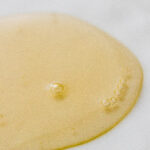 Is Neem Oil Safe for Pest Control on Succulents?
Is Neem Oil Safe for Pest Control on Succulents?Regularly inspect your succulents for signs of new infestations to catch them early
One of the most common pests that can affect succulents is scale insects. These tiny pests are often difficult to detect, but if left untreated, they can cause significant damage to your plants. To ensure the health and longevity of your succulents, it's important to regularly inspect them for signs of scale infestation.
What are scale insects?
Scale insects are small, sap-sucking pests that belong to the order Hemiptera. They are named after the protective scale-like covering that they form on their bodies. These covers can vary in color and texture, ranging from flat to waxy or even cottony in appearance. Scale insects can be found on the stems, leaves, and even the roots of succulents.
There are two main types of scale insects that commonly infest succulents:
- Soft scale insects: These scale insects have a soft, waxy covering that can be easily removed. They are often found in clusters on the stems and leaves of succulents.
- Armored scale insects: Unlike soft scale insects, armored scale insects have a hard, protective covering that cannot be easily removed. They are usually found on the stems and branches of succulents.
How to identify scale infestation on succulents
Identifying scale infestation on succulents can be challenging, as these pests often blend in with the plant's natural coloration. However, there are a few telltale signs that can help you identify their presence:
- Visible scales: Look for small, raised bumps on the stems or leaves of your succulents. These bumps may range in color from white to brown or even black, depending on the species of scale.
- Sticky residue: Scale insects excrete a sticky substance called honeydew. If you notice a shiny, sticky residue on the leaves or surrounding surfaces of your succulents, it could be a sign of scale infestation.
- Yellowing or wilting leaves: As scale insects feed on the sap of succulents, they can cause the leaves to turn yellow, wilt, or even drop prematurely.
- Sooty mold: The honeydew excreted by scale insects can attract sooty mold, a black fungus that can cover the leaves and stems of succulents. Sooty mold is not harmful to the plants directly but can interfere with photosynthesis if it becomes too widespread.
It's important to note that scale infestations can spread rapidly, so early detection is crucial. By regularly inspecting your succulents and being on the lookout for these signs, you can catch scale infestations early and take appropriate action to mitigate the damage.
Frequently Asked Questions
1. How can I identify scale infestation on my succulents?
 Could Succulent Balls Indicate a Disease?
Could Succulent Balls Indicate a Disease?Look for small, oval-shaped bumps on the leaves or stems of your succulents. These bumps can be white, brown, or black in color and may appear waxy or shiny.
2. Are scale insects harmful to my succulents?
Yes, scale insects can cause damage to your succulents. They feed on the plant's sap, which can weaken and eventually kill the plant if left untreated.
3. How can I get rid of scale infestation on my succulents?
You can try using a soft brush or cloth dipped in rubbing alcohol to gently remove the scales from your succulents. Alternatively, you can use an insecticidal soap or neem oil spray to treat the infestation.
4. How can I prevent scale infestation on my succulents?
To prevent scale infestation, regularly inspect your succulents for signs of scale insects and take immediate action if you spot any. Avoid overwatering your plants and maintain good air circulation around them. Quarantine new plants before introducing them to your collection to prevent introducing pests.
If you want to read more articles similar to Identifying Scale Infestation on Succulents: A Guide for Plant Lovers, you can visit the Pests and Diseases category.

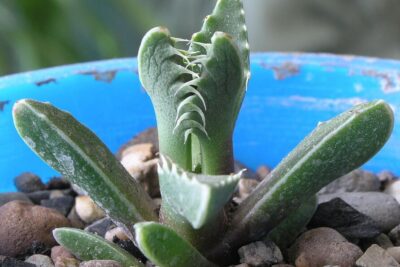

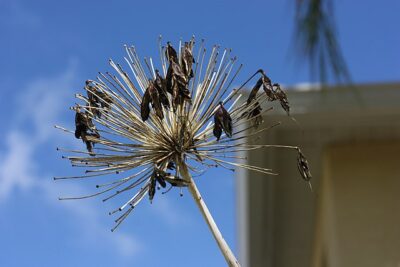
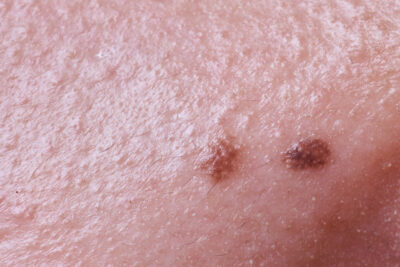
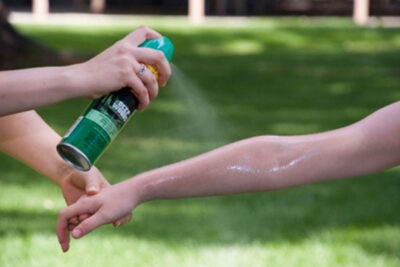
You Must Read